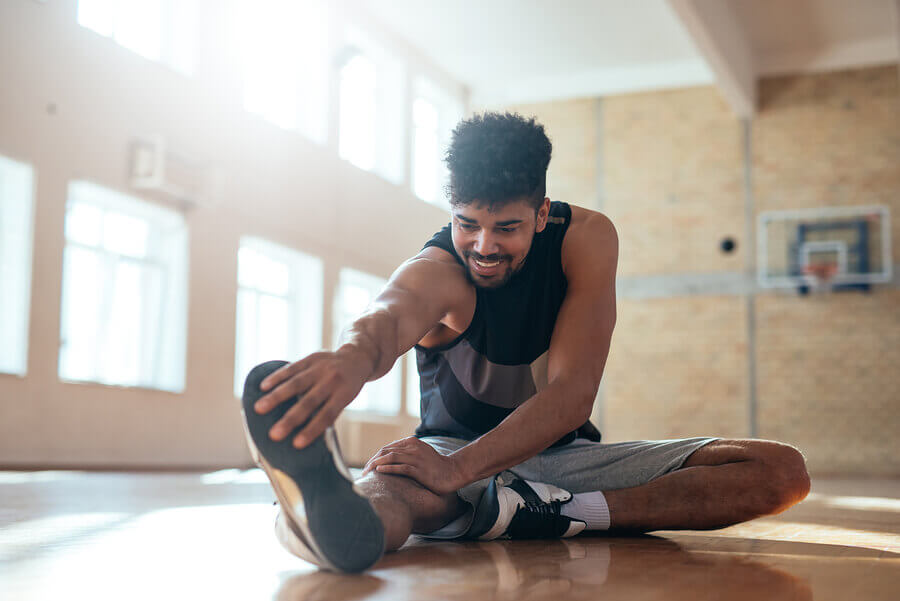Relieving Painful Muscles after a Workout

Exercising is great for health and always comes with high recommendations. But it can also lead to painfully sore muscles, especially if you’re just starting to work out. In our post today, let’s look at ways to relieve muscle pain after a workout.
Negative consequences of exercising may include muscle soreness, strains, and contractures that result from working out too hard. The resulting discomfort leads to muscle stiffness and pain but you can relieve it by following our tips below.
Relieving sore muscles
1. Immediately after your workout
Regardless of what your workout consists of, we highly recommend stretching to wrap it up. Do stretches that focus on the muscles you used during your workout.
Stretching your muscles helps to prevent strains and contractures that usually form after exercise. They’ll also help you improve your circulation and eliminate toxic metabolites that build up in your muscles after physical activity.
2. Relieve sore muscles: a few hours after working out
If you notice muscle stiffness and pain a few hours after exercising, you’re likely suffering from a stain or contracture. Toxins can easily accumulate in these types of situations as the affected muscles are continuously in a contracted or strained state.

You need to stop physical activity to treat strains or contractures as overworking your muscles could result in a serious injury. But these cases are usually solved with a couple of days of rest.
You can treat the pain with hot baths that relax the affected muscle. Massages are also a good option as the manual kneading can improve circulation and help eliminate toxins. In addition, applying ice to the area also helps to reduce inflammation.
3. Relieving muscle pain a day after working out
If the pain or soreness continues or worsens by the next day, you must rest. Certain muscle groups, such as the calves, take longer to recover from strains because they’re constantly working in everyday activities such as walking. Keep massaging the area; we highly recommend using lacrosse balls or foam rollers to massage the deepest muscle fibers.
If you’re still experiencing pain or soreness after a few days or a week, contact a physical therapist. But don’t worry, it doesn’t always mean that you have a serious injury; more often than not, persisting pain is a symptom of a trigger point.
Trigger points are areas in affected muscles that are more vulnerable to relapse into soreness or strain. In other words, they can reoccur and linger.
While it may differ from case to case, physical therapists will generally treat them with a manual or dry needling therapy. The latter implies using a thin needle to prick and undo the knots in the muscle. Though it might sound a little scary, it’s a safe way of preventing the pain from reoccurring.

4. Muscles: still feeling pain or soreness?
If you’ve tried a physical therapist and are still experience pain despite receiving treatment, it’s time to look into the seriousness of the injury. You might be suffering a serious rupture or strain, which would require an ultrasound by a sports doctor to determine the degree of the damage.
In cases of serious injuries or strains, your doctor may schedule an MRI scan to further analyze the extent of your condition.
Wrapping up, analyzing the symptoms carefully is crucial. If you can relieve your pain and soreness the easy way, make sure to do so and prevent serious situations!
Exercising is great for health and always comes with high recommendations. But it can also lead to painfully sore muscles, especially if you’re just starting to work out. In our post today, let’s look at ways to relieve muscle pain after a workout.
Negative consequences of exercising may include muscle soreness, strains, and contractures that result from working out too hard. The resulting discomfort leads to muscle stiffness and pain but you can relieve it by following our tips below.
Relieving sore muscles
1. Immediately after your workout
Regardless of what your workout consists of, we highly recommend stretching to wrap it up. Do stretches that focus on the muscles you used during your workout.
Stretching your muscles helps to prevent strains and contractures that usually form after exercise. They’ll also help you improve your circulation and eliminate toxic metabolites that build up in your muscles after physical activity.
2. Relieve sore muscles: a few hours after working out
If you notice muscle stiffness and pain a few hours after exercising, you’re likely suffering from a stain or contracture. Toxins can easily accumulate in these types of situations as the affected muscles are continuously in a contracted or strained state.

You need to stop physical activity to treat strains or contractures as overworking your muscles could result in a serious injury. But these cases are usually solved with a couple of days of rest.
You can treat the pain with hot baths that relax the affected muscle. Massages are also a good option as the manual kneading can improve circulation and help eliminate toxins. In addition, applying ice to the area also helps to reduce inflammation.
3. Relieving muscle pain a day after working out
If the pain or soreness continues or worsens by the next day, you must rest. Certain muscle groups, such as the calves, take longer to recover from strains because they’re constantly working in everyday activities such as walking. Keep massaging the area; we highly recommend using lacrosse balls or foam rollers to massage the deepest muscle fibers.
If you’re still experiencing pain or soreness after a few days or a week, contact a physical therapist. But don’t worry, it doesn’t always mean that you have a serious injury; more often than not, persisting pain is a symptom of a trigger point.
Trigger points are areas in affected muscles that are more vulnerable to relapse into soreness or strain. In other words, they can reoccur and linger.
While it may differ from case to case, physical therapists will generally treat them with a manual or dry needling therapy. The latter implies using a thin needle to prick and undo the knots in the muscle. Though it might sound a little scary, it’s a safe way of preventing the pain from reoccurring.

4. Muscles: still feeling pain or soreness?
If you’ve tried a physical therapist and are still experience pain despite receiving treatment, it’s time to look into the seriousness of the injury. You might be suffering a serious rupture or strain, which would require an ultrasound by a sports doctor to determine the degree of the damage.
In cases of serious injuries or strains, your doctor may schedule an MRI scan to further analyze the extent of your condition.
Wrapping up, analyzing the symptoms carefully is crucial. If you can relieve your pain and soreness the easy way, make sure to do so and prevent serious situations!
All cited sources were thoroughly reviewed by our team to ensure their quality, reliability, currency, and validity. The bibliography of this article was considered reliable and of academic or scientific accuracy.
- Warden SJ. Prophylactic Use of NSAIDs by Athletes: A Risk/Benefit Assessment. Phys Sportsmed [Internet]. 2010 Apr 13 [cited 2019 Jun 18];38(1):132–8. Available from: http://www.tandfonline.com/doi/full/10.3810/psm.2010.04.1770
- Muscle aches: Causes, home remedies and prevention [Internet]. [cited 2019 Jun 18]. Available from: https://www.medicalnewstoday.com/articles/322869.php
- Herbert RD, de Noronha M, Kamper SJ. Stretching to prevent or reduce muscle soreness after exercise. Cochrane Database Syst Rev [Internet]. 2011 Jul 6 [cited 2019 Jun 18];(7):CD004577. Available from: http://www.ncbi.nlm.nih.gov/pubmed/21735398
This text is provided for informational purposes only and does not replace consultation with a professional. If in doubt, consult your specialist.








